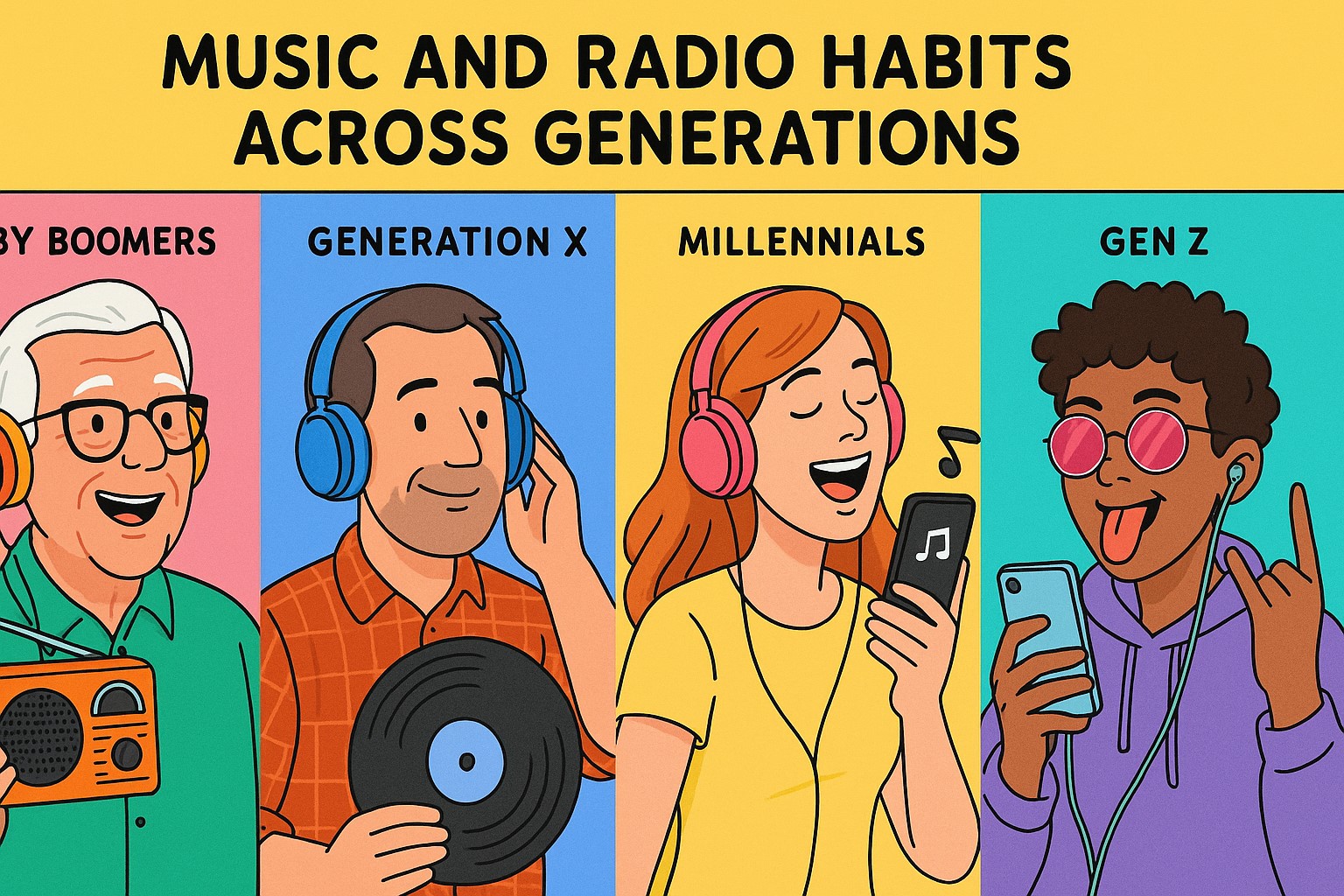Music has always been a powerful form of expression and identity. Yet, how people enjoy and discover music varies greatly between generations, especially in the digital age. From vinyl records to streaming platforms, each age group has its own preferences.
Baby Boomers (born 1946–1964) grew up with vinyl, cassette tapes, and AM/FM radio. Their musical taste often revolves around classic rock, Motown, folk, and the great pop legends of the ’60s and ’70s. Even today, many Boomers still prefer listening to traditional radio stations or CDs in the car.
Generation X (1965–1980) experienced the rise of MTV, mixtapes, and the golden age of FM radio. Their musical favorites include ’80s rock, early hip-hop, and alternative music from the ’90s. While some have adapted to streaming, many still enjoy curated playlists on services like Spotify or Apple Music.
Millennials (1981–1996) witnessed the digital music revolution. From Napster to iTunes, they were among the first to embrace downloading and later, streaming. They have diverse tastes, blending genres like indie, pop-punk, electronic, and R&B. Millennials often use platforms like Spotify and YouTube, but many still appreciate radio—especially during commutes.
Gen Z (1997–2012) lives in the TikTok era, where viral clips often dictate music trends. Their taste is eclectic and fast-changing, from K-pop to lo-fi beats. Radio plays a smaller role in their lives; they favor on-demand listening via Spotify, Apple Music, or YouTube, often discovering songs through social media.
In short, each generation’s listening habits reflect the technology and culture of their time. While radio still connects with older audiences, younger generations are reshaping how music is shared, discovered, and enjoyed worldwide.
(This is an AI generated article)



